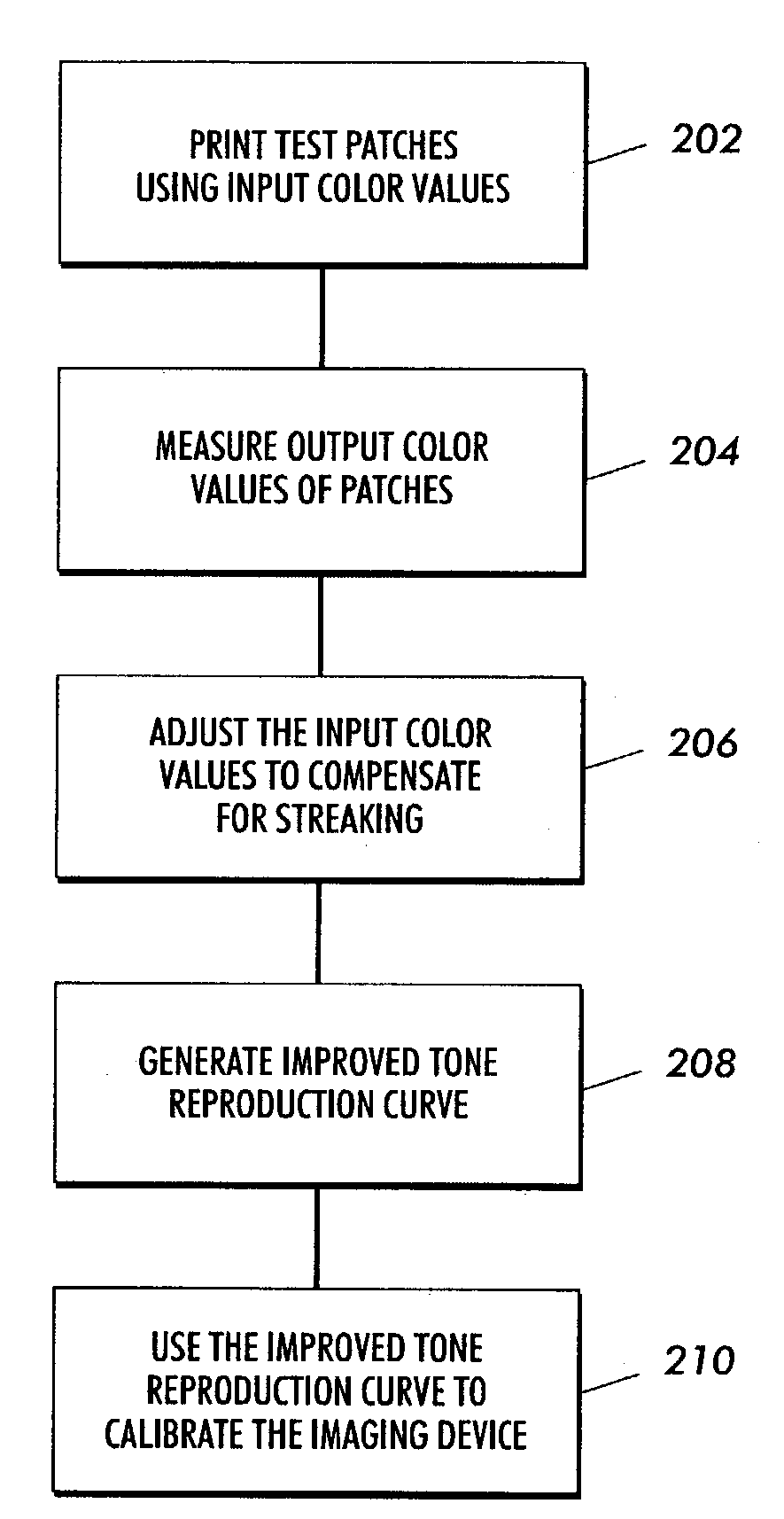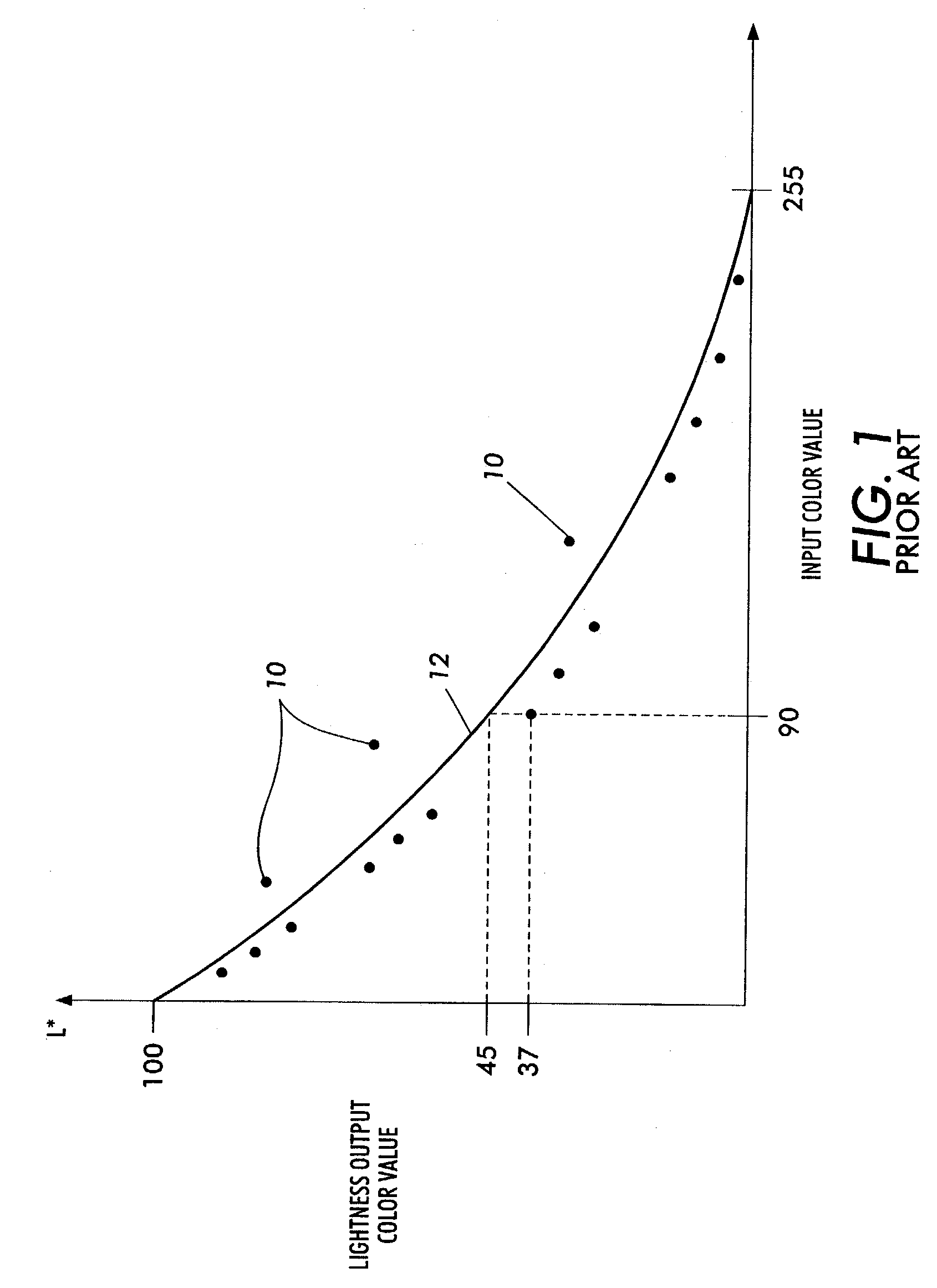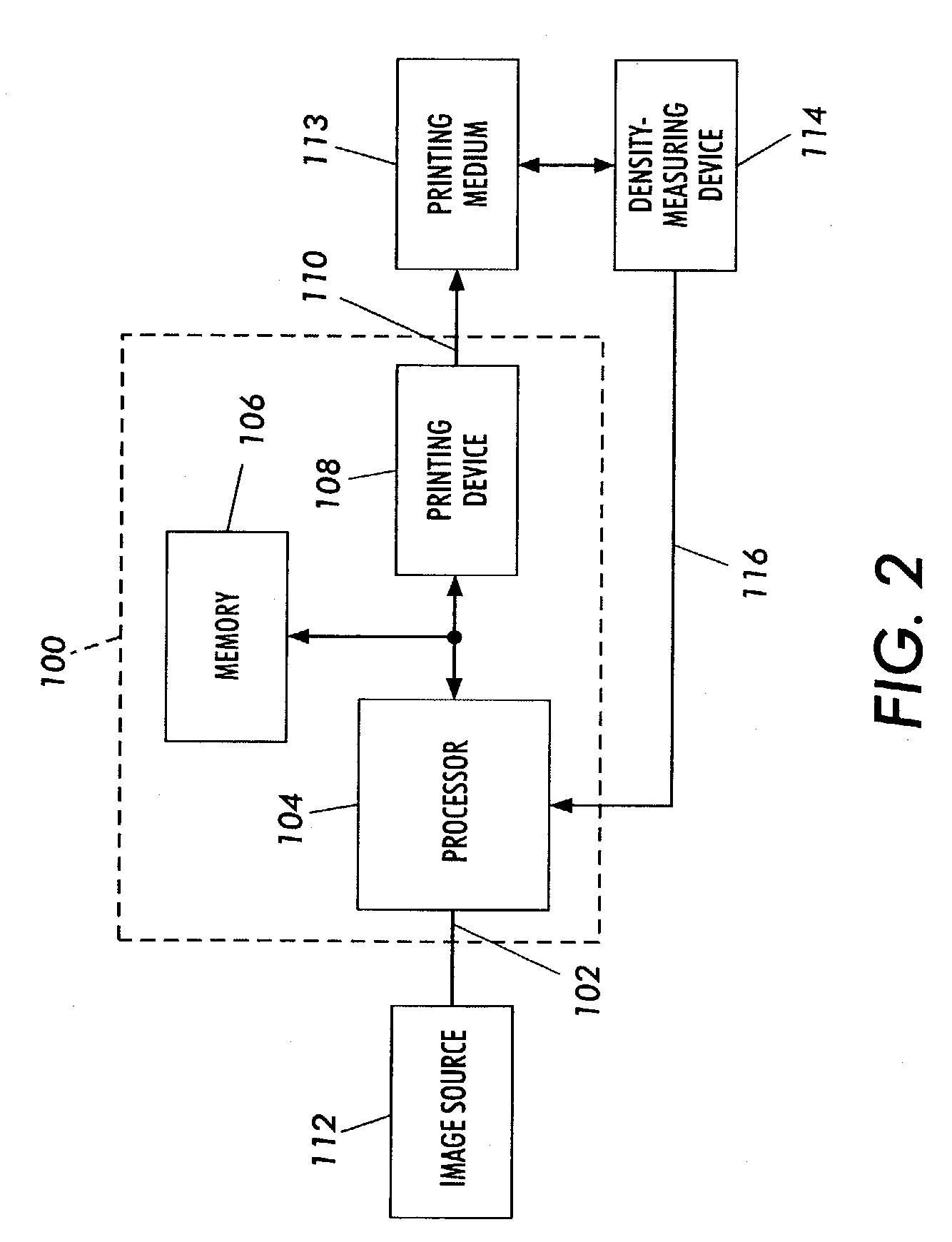Calibration method for an imaging device
a technology of imaging device and calibration method, which is applied in the field of image printing device, can solve the problems of inaccurate color reproduction, poor fit, inaccurate trcs, etc., and achieve the effect of reducing the adverse effects of streaks
- Summary
- Abstract
- Description
- Claims
- Application Information
AI Technical Summary
Benefits of technology
Problems solved by technology
Method used
Image
Examples
Embodiment Construction
[0035]FIG. 2 shows a system that prints test patches, measures color output values of the test patches, and calibrates the color output characteristics of the system based upon the measured color output values. The system includes an arrangement 100 according to embodiments of the present subject invention, an image source 112, a print medium 113, and a color-measuring device 114.
[0036]The arrangement 100 includes an input 102, a processor 104, a memory 106, a printing device 108, and an output 110. In general, the arrangement receives at the input 102 an image and generates at the output 110 printed pages of recording media from which the image may be physically reconstructed.
[0037]The image source 112 can be any suitable device that generates image data corresponding to a two-dimensional image. The image source 112 is further configured to provide image data corresponding to an array of rows and columns of test patches that are used to calibrate the arrangement 100, as will be dis...
PUM
 Login to View More
Login to View More Abstract
Description
Claims
Application Information
 Login to View More
Login to View More - R&D
- Intellectual Property
- Life Sciences
- Materials
- Tech Scout
- Unparalleled Data Quality
- Higher Quality Content
- 60% Fewer Hallucinations
Browse by: Latest US Patents, China's latest patents, Technical Efficacy Thesaurus, Application Domain, Technology Topic, Popular Technical Reports.
© 2025 PatSnap. All rights reserved.Legal|Privacy policy|Modern Slavery Act Transparency Statement|Sitemap|About US| Contact US: help@patsnap.com



